‘Shocking imbalance’: Latin America’s poorest shut out of vaccine access as virus surges
Julia Guzmán lost her husband Victor Raúl Vega last August when 13 members of her household in the Peruvian capital of Lima contracted the coronavirus at the same time. She was quickly kicked off her husband’s state insurance plan and now fears reinfection, unable to get vaccinated.
“There are no vaccines here … the system is so slow,” said Guzmán, 54, who helps care for a grandson and is desperate for her 20-year-old daughter to get vaccinated.
Sarcastically, she adds, they’ll be vaccinated by 2030: “Sadly, this is our situation.”
In the United States, anyone who wants a vaccine can one get one, with the supply of shots outstripping demand. Not so in Peru or across Latin America and the Caribbean.
Just about a tenth of the region’s population of over 653 million has received at least one dosage of the vaccine. That’s nowhere near the at least 500 million people the Pan American Health Organization says need to be vaccinated in the Americas region to control the spread and achieve “herd immunity.”
An analysis by the Miami Herald, el Nuevo Herald and the McClatchy Washington Bureau found that a region already in trouble is falling further behind, with the poorest suffering the deadliest consequences as new contagious variants emerge.
Among the findings, as of Sunday:
▪ Seventeen Latin American and Caribbean countries have a vaccination rate lower than 12.6% — the average rate for the region.
▪ In seven of the 17, more than 30.5% of the population lives in poverty — above the average poverty rate for the region, according to the United Nations.
▪ Eleven that had lower than average vaccination rates also had a lower than average per-person gross domestic product — the broadest measure of economic activity — at below $8,870.
“Vaccine apartheid is what I call it,” Dr. Leslie Ramsammy, a former Guyanese health minister who currently advises the health ministry. “Guyana is willing to procure vaccines. The government has committed to finding resources to vaccinate our people. But even though we are a small country, we are unable to find enough vaccines.”
Regional health authorities say there aren’t enough vaccines available globally to have an impact on the record high COVID-19 infection rates and spike in deaths pummeling the region. Experts warn that reaching herd immunity will be impossible absent significant new vaccine supplies, raising the possibility that the virus will maintain its grip on the region for months or even years to come.
The dismal vaccine rates in one of the world’s hardest hit regions are partly the result of wealthy nations gobbling up most of the global supply, paying full price to manufacturers and making it difficult for poorer nations to acquire the shots. Early resistance by the United States and other nations to easing intellectual property rules on pharmaceutical products to allow an expansion of the global supply is another factor. Medical professionals say that as cases rapidly accelerate, the cost will be more lives.
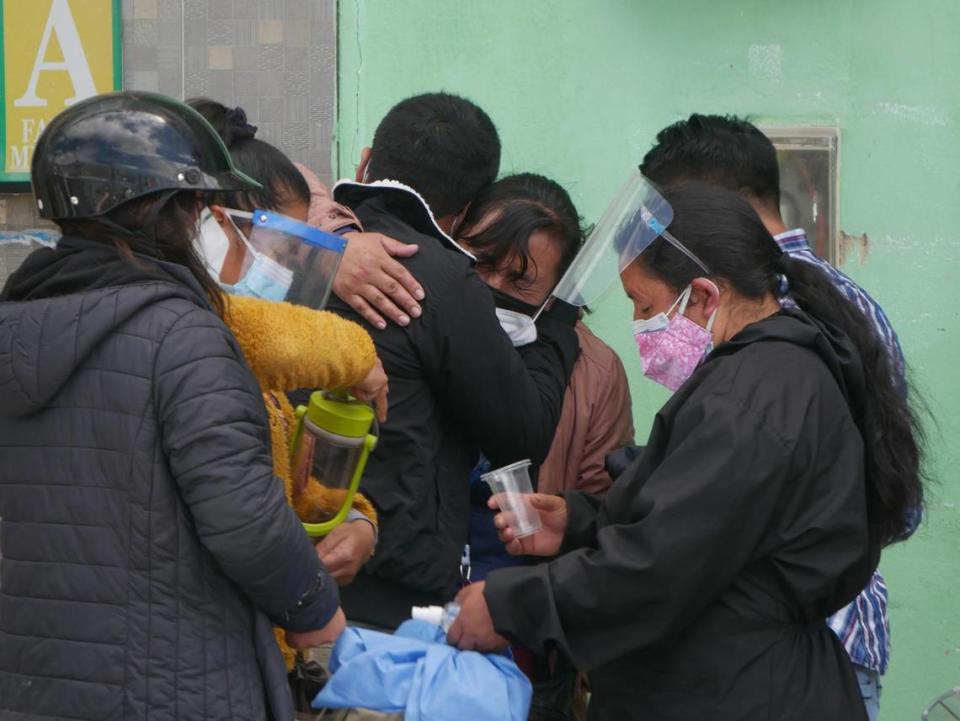
“We still do not have enough doses of COVID-19 vaccines for the entire population of Latin America and the Caribbean,” said Dr. Carissa Etienne, director of the Pan American Health Organization (PAHO), the Americas branch of the World Health Organization. “We need more vaccines and we are advocating at the highest levels for increased supplies from manufactures, for donations from countries that have access vaccines.”
‘Shocking imbalance’ in vaccine distribution
Latin America and the Caribbean account for 8% of the world’s population but 30% of all reported COVID-19-related deaths globally, according to the analysis, which is based off economic and demographic data as well as figures for daily COVID-19 cases, deaths and vaccinations.
Officially, nearly 975,000 people have died of COVID-19 in Latin America and the Caribbean through May 11 of this year — a rate of 1.5 deaths per every 1,000 of the region’s residents, a figure widely considered an undercount. Brazil, Peru, Mexico, Colombia and Argentina have even higher COVID-19 death rates.
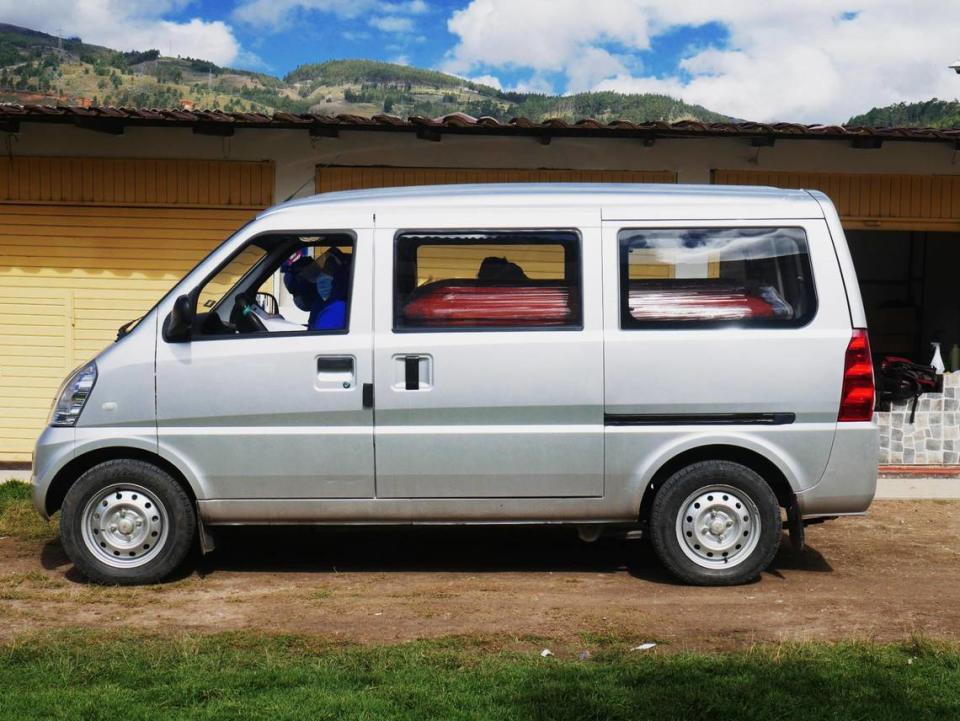
In Peru, hospitals are stretched beyond capacity as desperate citizens turn to street vendors hawking oxygen tanks that cost more than the monthly salary of the working poor for a day’s supply. The country currently has the second-highest per capita death rate in the region — two people for every 1,000 residents. In February, officials pledged that more than 50,000 vaccines— China’s Sinopharm and Pfizer —were on the way. The latecomer vaccine by Johnson & Johnson was also authorized by Peru but then came the global pause on clotting concerns that disrupted global production and distribution.
Today Peru’s vaccination needs aren’t anywhere near met.
Guzmán had friends and connections that helped her get oxygen initially. But eventually her diabetic husband Victor, 59, a retired miner, died alone, gasping for breath as his hospital ran low on oxygen.
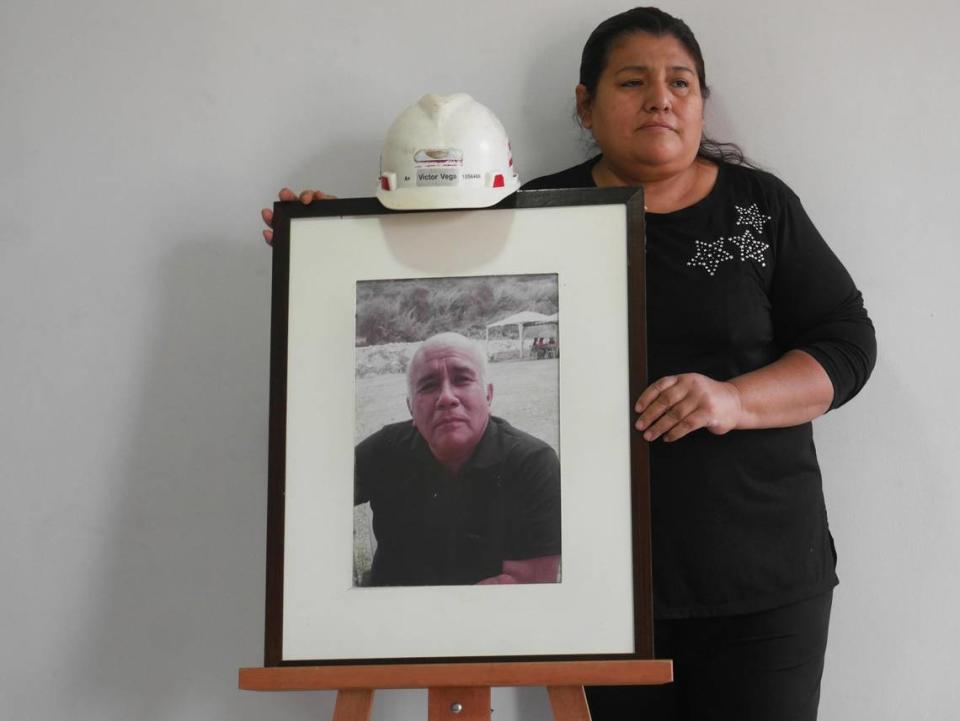
Now as vaccines are becoming available, she’s uncertain about her chances of getting protection against the virus. Peru has been gripped with political scandal over politicians jumping the line to get vaccinated. Former President Martín Vizcarra acknowledged getting vaccinated with China’s Sinopharm vaccine last October, before the public rollout. In April, he took to Twitter to tell Peruvians he and his wife had tested positive for coronavirus despite having gotten the shot.
Peru is not the only country in Latin America where public officials have been accused of jumping the line. Officials in Argentina and Ecuador have also been fired for receiving vaccines ahead of their turn. Earlier this month, an opposition senator in Paraguay, Mirta Gusinksy, 73, became the fifth official in her nation to resign after a health ministry investigation revealed that at least 500 people had been illegally vaccinated ahead of their turn.
The landlocked nation’s slow rollout has been rocked by complaints of irregular vaccinations. Paraguay has administered only 167,680 doses for a population of 7 million through May 11, and is far behind other nations in extending vaccine access, only recently lowering the threshold for those eligible to 70 and older.
It wasn’t supposed to be this way. The World Health Organization launched a vaccine global access platform known as COVAX in April 2020, a time when vaccines were first under production, to ensure fair access to vaccines by helping the world’s neediest countries purchase COVID-19 inoculations at a discounted price.
But as wealthier countries cut their own bilateral deals with vaccine makers, the global alliance found itself with a shortage of vaccines to distribute. “There remains a shocking imbalance in the global distribution of vaccines,” WHO Director-General Tedros Adhanom Ghebreyesus said on April 9.
While more than 700 million vaccines had been administered globally, “over 87% have gone to high-income or upper middle-income countries, while low-income countries have received just 0.2%,” he said.
By the end of May, COVAX recipients in the region are expected to have received enough vaccines to cover 2 to 2.2% of their population, PAHO said. But that is a long way from the 60% to 70% people WHO has said will need to be immunized against the virus to break transmission.
Recently the director of PAHO wrote to the Biden administration asking if the United States could donate surplus vaccines to countries in Latin America and the Caribbean. The United States has since said it will donate 60 million AstraZeneca shots to some nations. Though approved for use in the United Kingdom, U.S. health officials have not approved AstraZeneca’s vaccine, citing a need for more data about clotting risks.
The United States has also said it supports the waiver of intellectual property protections for COVID-19 vaccines to allow production to ramp up.
“It’s important for the U.S. and European Union, and other developed countries in the world to provide the most support to other countries. This is not only an ethical and moral imperative,” PAHO Director Jarbas Barbosa. “If we want to control the transmission, we need to work everywhere. We need to support every country to get the access to more vaccines.”
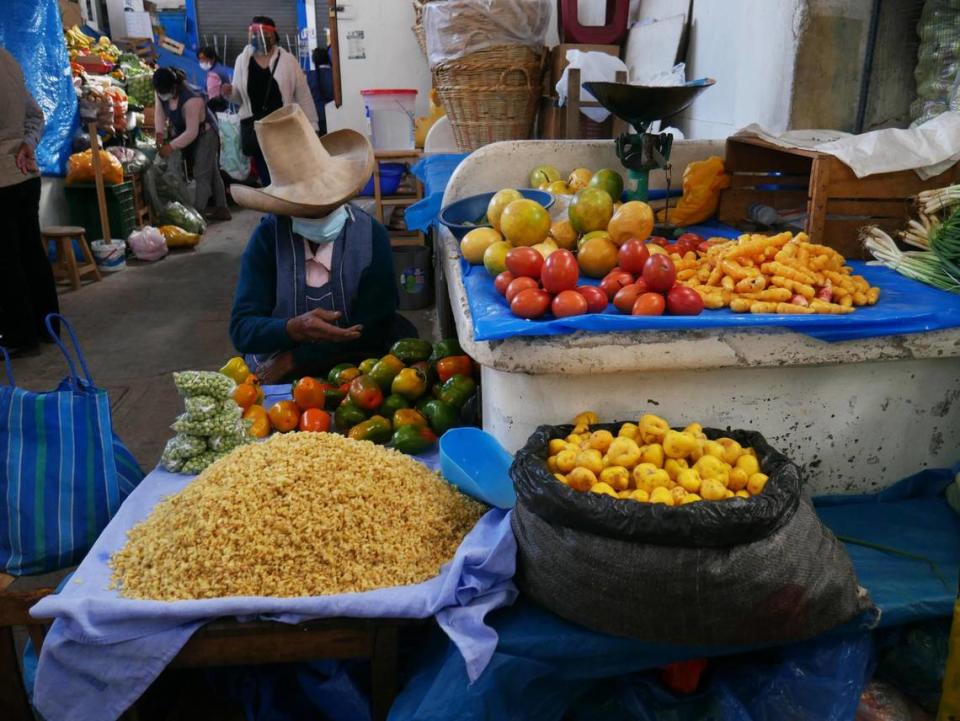
‘We are all afraid’
Through the COVAX program, Peru is slated to receive just under 1.3 million doses of the AstraZeneca vaccine, and about 827,000 doses of vaccine made by Pfizer-BioNTech. With less than 5% of the population vaccinated with at least one dose, according to the analysis, Peruvian President Francisco Sagasti announced on social media recently that the country of 32 million has also inked a deal with Pfizer-BioNTech to purchase an additional 12 million doses that should be delivered by year’s end.
In Bolivia, one of the perennially poorest nations in the hemisphere, hopes of a COVAX solution are fading fast.
Bolivia received its first supply, 228,000 doses of its 672,000 dose allocation of AstraZeneca, through the U.N.-backed program on March 21. On April 28, it received its full allocation of 92,430 Pfizer-BioNtech shots.
But by then COVID-19 had already devastated elderly Bolivians, with more than 300,000 infected and almost 13,000 dead in the landlocked country through mid-April. To date, around 6% of the population has been vaccinated.
“The situation in the country is one of terror. We are in the first tough blows of this third wave and we have not achieved the vaccination plan pushed by the government,” said Dr. Fernando Romero, citing a 4% vaccination rate. “The rest is left unprotected, on their own and battered by this third wave.”
COVAX had raised hopes, but it became apparent quickly that wealthy countries had captured supplies. There are “many countries that have bought three or four times more than they need, and haven’t left anything for countries without vaccines and with economic problems,” complained Romero, who works in the capital city of La Paz and is the secretary general of SIRMES La Paz, a union for medical workers.
To illustrate Romero’s point, about the same time Bolivia received 92,000 doses of the Pfizer vaccine in mid-April, the White House announced that U.S. vaccine manufacturers hit weekly production levels of 14.5 million doses.
“Today, there are no slots left in intensive care and in intermediate care. For the population they have, the quantity of vaccines is real, real small,” Romero said. “We are at the mercy of this government.”
Romero said at his own hospital in La Paz, 18 of 22 colleagues in the surgical ward have tested positive for coronavirus.
“It’s our reality,” he said, adding that in the year-plus that COVID-19 has spread, more than 1,000 medical workers in Bolivia have died. “We are all afraid.”
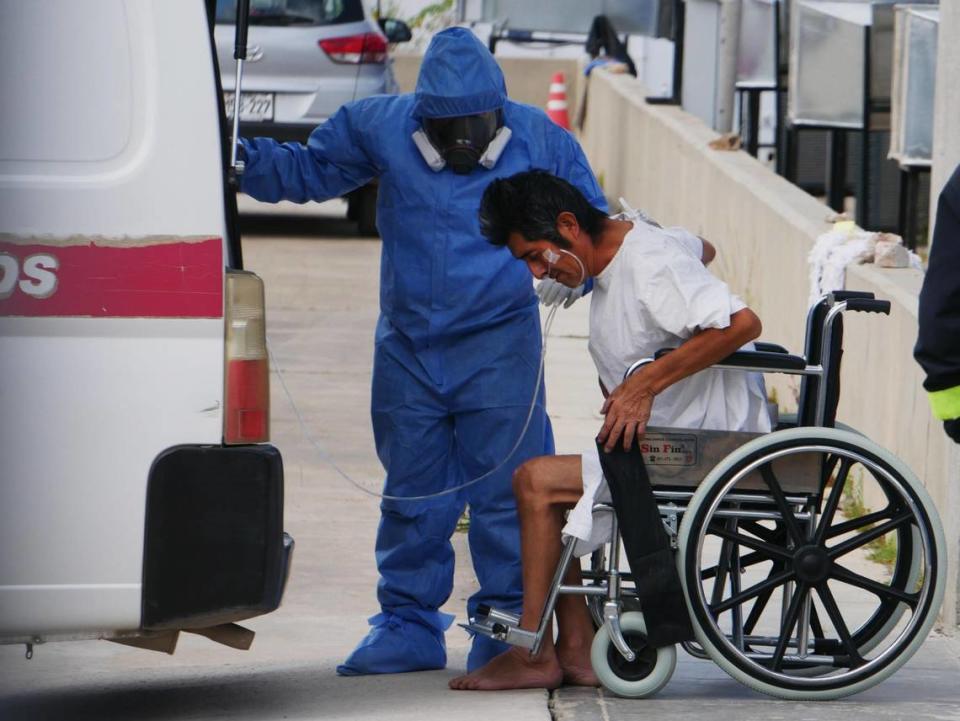
China, Russia filling vaccine void
Countries in the region that are defying the odds to vaccinate significant numbers of their population are turning to nations like China and Russia, which have been looking to cement their influence in Latin America and the Caribbean by providing vaccines to countries desperate to slow the spread of the deadly virus.
With wealthy nations grabbing most of the doses of U.S.-based Moderna and Pfizer shots, and COVAX struggling to distribute vaccines, Beijing and Moscow have emerged as the leading vaccine suppliers in several countries by either donating doses or providing them at affordable rates, though only China’s Sinopharm has been approved by the WHO for emergency use.
Ivelaw Griffith, a Guyanese-born Caribbean expert, said the pandemic has allowed a country like China to use its vaccine as “leveraging pressure” in broader political goals, like encouraging countries in the region to drop any allegiance or partnership with Taiwan.
“Many countries outside of the hemisphere are beginning to find this is an opportune time to pursue some geopolitical interests,” unrelated to health or the pandemic, said Griffith, a senior associate at the Center for Strategic and International Studies, a Washington-based think tank.
In March, English-speaking Guyana became the first Caribbean Community member to get a donation of 20,000 Sinopharm doses from China. By late April, the small South American nation had reached an important milestone: About one in every three adults had received at least one vaccine dose, according to the health ministry. That was accomplished primarily through utilization of the Russian-made Sputnik V shot; the government purchased 200,000 doses at $20 each.
Guyana is expected to become a major oil producer in the years ahead, making it a strategic ally for expanding economic and political interests.
The decision to buy Russian came after health authorities spoke to Pfizer, Moderna and other companies only to be told that they wouldn’t be able to supply any shots to Guyana this year, said Ramsammy, the former health minister.
“Guyana believes that like the U.S., Europe and other rich countries, and like Israel has demonstrated, we have to vaccinate ourselves out of this pandemic,” Ramsammy said. “We have decided that we will, by whatever resources are necessary, to vaccinate our people.”
In recent days, cases have been surging in areas in Guyana that border Brazil, an increase health officials attribute to the arrival of a faster spreading variant.
Sharon Castillo, a spokeswoman for Pfizer and BioNTech, said they are committed to working with governments to ensure equitable and affordable access to COVID-19 vaccines, adding that 36% of doses have been allocated for low and middle-income nations, in addition to COVAX agreements.
Moderna recently said it signed an agreement with Gavi, a public-private partnership helping lead COVAX, to supply up to 500 million doses at its lowest tiered price to less wealthy nations. Up to 34 million doses will be delivered later this year, and the rest during next year, the company said.
While mass vaccination sites are now common across the United States, countries like Peru are just struggling to vaccinate first responders and the elderly.
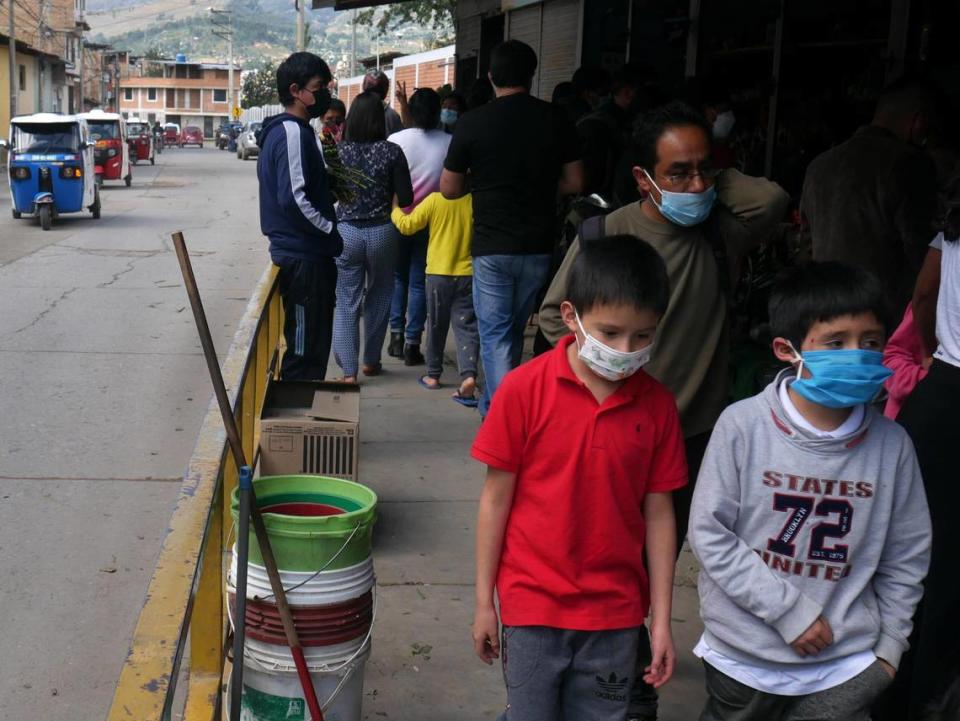
After losing their patriarch last year, the Guzmáns are trying to get their lives back on track. Daughter Fiorella Guzmán, 34, is thankful that despite having the coronavirus while eight months pregnant, she delivered a healthy son.
But the stress of trying unsuccessfully to find hospital space, medication and ultimately oxygen for her father took a heavy toll.
“We all lost three uncles and a cousin ... we are all at risk,” she said. “This whole pandemic problem has me thinking of leaving Peru.”

